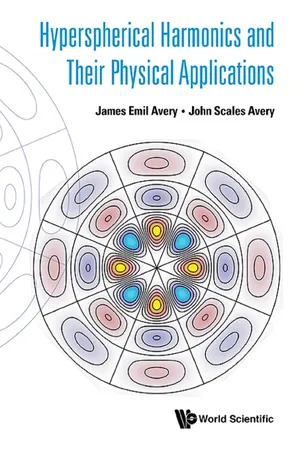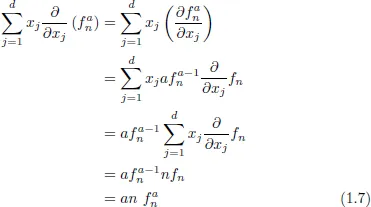
Hyperspherical Harmonics and Their Physical Applications
- 300 pages
- English
- ePUB (mobile friendly)
- Available on iOS & Android
Hyperspherical Harmonics and Their Physical Applications
About this book
-->
Hyperspherical harmonics are extremely useful in nuclear physics and reactive scattering theory. However, their use has been confined to specialists with very strong backgrounds in mathematics. This book aims to change the theory of hyperspherical harmonics from an esoteric field, mastered by specialists, into an easily-used tool with a place in the working kit of all theoretical physicists, theoretical chemists and mathematicians. The theory presented here is accessible without the knowledge of Lie-groups and representation theory, and can be understood with an ordinary knowledge of calculus. The book is accompanied by programs and exercises designed for teaching and practical use.
--> Contents:
- Preface
- Harmonic Functions
- Generalized Angular Momentum
- Gegenbauer Polynomials
- Fourier Transforms in d Dimensions
- Fock's Treatment of Hydrogenlike Atoms and Its Generalization
- D-Dimensional Hydrogenlike Orbitals in Direct Space
- Generalized Sturmians
- Choosing Appropriate Hyperspherical Representations
- Molecular Integrals from Hyperspherical Harmonics
- Lagrangians for Particles and Fields
- Coordinate Transformations for N Bodies
- Some Illustrative Examples
- Appendices:
- The D-Dimensional Harmonic Oscillator
- Molecular Integrals for Slatertype Orbitals
- Bibliography
- Index
-->
--> Readership: Scientists and researchers in theoretical physics, theoretical chemistry, and mathematics. -->
Keywords:Harmonic Functions;Reactive Scattering Theory; Nuclear Physics;Gegenbauer Polynomials;Generalized Sturmians;Slatertype OrbitalsReview: Key Features:
- Exercises are included at the end of each chapter
- The e-version of the exercises and solutions can be found in the supplementary tab
Frequently asked questions
- Essential is ideal for learners and professionals who enjoy exploring a wide range of subjects. Access the Essential Library with 800,000+ trusted titles and best-sellers across business, personal growth, and the humanities. Includes unlimited reading time and Standard Read Aloud voice.
- Complete: Perfect for advanced learners and researchers needing full, unrestricted access. Unlock 1.4M+ books across hundreds of subjects, including academic and specialized titles. The Complete Plan also includes advanced features like Premium Read Aloud and Research Assistant.
Please note we cannot support devices running on iOS 13 and Android 7 or earlier. Learn more about using the app.
Information
Chapter 1
HARMONIC FUNCTIONS
1.1Definitions














Table of contents
- Cover
- Halftitle
- Title
- Copyright
- Dedication
- Contents
- Preface
- 1. HARMONIC FUNCTIONS
- 2. GENERALIZED ANGULAR MOMENTUM
- 3. GEGENBAUER POLYNOMIALS
- 4. FOURIER TRANSFORMS IN d DIMENSIONS
- 5. FOCK’S TREATMENT OF HYDROGENLIKE ATOMS AND ITS GENERALIZATION
- 6. D-DIMENSIONAL HYDROGENLIKE ORBITALS IN DIRECT SPACE
- 7. GENERALIZED STURMIANS
- 8. CHOOSING APPROPRIATE HYPERSPHERICAL REPRESENTATIONS
- 9. MOLECULAR INTEGRALS FROM HYPERSPHERICAL HARMONICS
- 10. LAGRANGIANS FOR PARTICLES AND FIELDS
- 11. COORDINATE TRANSFORMATIONS FOR N BODIES
- 12. SOME ILLUSTRATIVE EXAMPLES
- Appendix A THE D-DIMENSIONAL HARMONIC OSCILLATOR
- Appendix B MOLECULAR INTEGRALS FOR SLATER-TYPE ORBITALS
- Bibliography
- Index